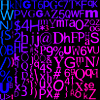[background=rgb(250, 250, 250)]Hi,[/background][/font]
[color=#333333][font=Verdana, Arial, Tahoma, Calibri, Geneva, sans-serif][background=rgb(250, 250, 250)]So I have a person (A) who's rotation is given with a quaternion (his location is given too). Now I want to figure out the location of a second person (B) that's standing in a certain position in relation to A. Like this: [/background][/font]
[color=#333333][font=Verdana, Arial, Tahoma, Calibri, Geneva, sans-serif][background=rgb(250, 250, 250)](^ means a person that's looking in that direction)[/background][/font]
[color=#333333][font=Verdana, Arial, Tahoma, Calibri, Geneva, sans-serif][background=rgb(250, 250, 250)]---^---[/background][/font]
[color=#333333][font=Verdana, Arial, Tahoma, Calibri, Geneva, sans-serif][background=rgb(250, 250, 250)]-----^-[/background][/font]
[color=#333333][font=Verdana, Arial, Tahoma, Calibri, Geneva, sans-serif][background=rgb(250, 250, 250)]So the second person is standing behind the other person at a given angle (alpha) at a given distance (x). What I want to find is the location of person B. I can't for the life of me figure out how to calculate this with quaternions (or what keywords to google for ^.^), even though I realise it's relatively simple o.O. [/background][/font]
[color=#333333][font=Verdana, Arial, Tahoma, Calibri, Geneva, sans-serif][background=rgb(250, 250, 250)]Thanks![/background][/font]
[color=#333333][font=Verdana, Arial, Tahoma, Calibri, Geneva, sans-serif]
[background=rgb(250, 250, 250)](^ means a person that's looking in that direction)[/background][/font]
[color=#333333][font=Verdana, Arial, Tahoma, Calibri, Geneva, sans-serif][background=rgb(250, 250, 250)]---^---[/background][/font]
[color=#333333][font=Verdana, Arial, Tahoma, Calibri, Geneva, sans-serif][background=rgb(250, 250, 250)]-----^-[/background][/font]
[color=#333333][font=Verdana, Arial, Tahoma, Calibri, Geneva, sans-serif][background=rgb(250, 250, 250)]So the second person is standing behind the other person at a given angle (alpha) at a given distance (x). What I want to find is the location of person B. I can't for the life of me figure out how to calculate this with quaternions (or what keywords to google for ^.^), even though I realise it's relatively simple o.O. [/background][/font]
[color=#333333][font=Verdana, Arial, Tahoma, Calibri, Geneva, sans-serif][background=rgb(250, 250, 250)]Thanks![/background][/font]
[color=#333333][font=Verdana, Arial, Tahoma, Calibri, Geneva, sans-serif]
[background=rgb(250, 250, 250)]-----^-[/background][/font]
[color=#333333][font=Verdana, Arial, Tahoma, Calibri, Geneva, sans-serif][background=rgb(250, 250, 250)]So the second person is standing behind the other person at a given angle (alpha) at a given distance (x). What I want to find is the location of person B. I can't for the life of me figure out how to calculate this with quaternions (or what keywords to google for ^.^), even though I realise it's relatively simple o.O. [/background][/font]
[color=#333333][font=Verdana, Arial, Tahoma, Calibri, Geneva, sans-serif][background=rgb(250, 250, 250)]Thanks![/background][/font]
[color=#333333][font=Verdana, Arial, Tahoma, Calibri, Geneva, sans-serif]









